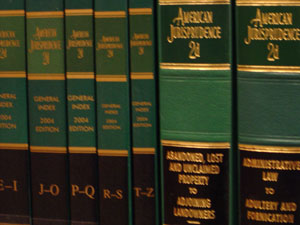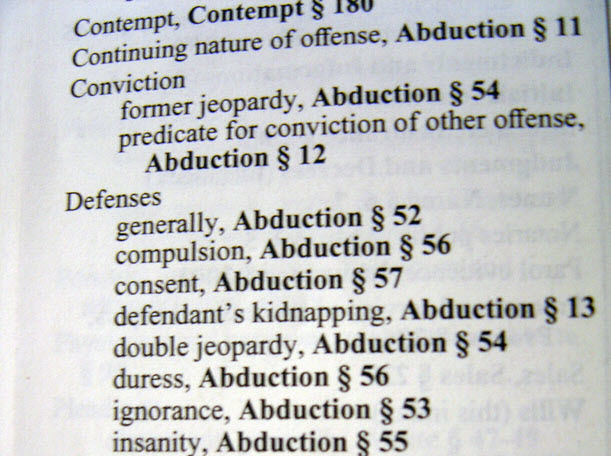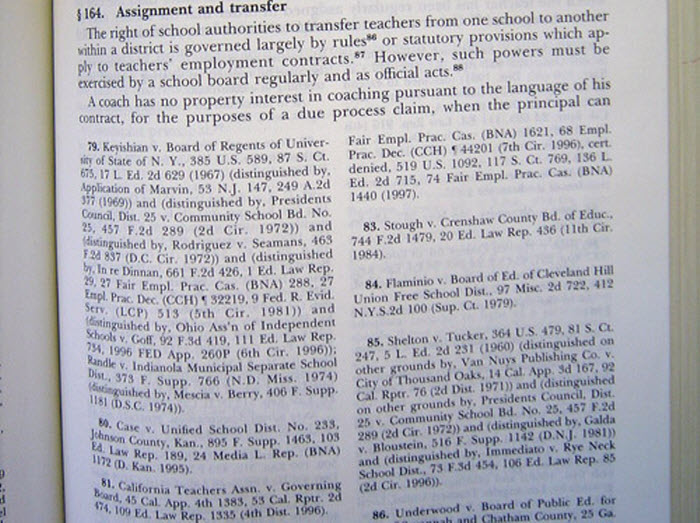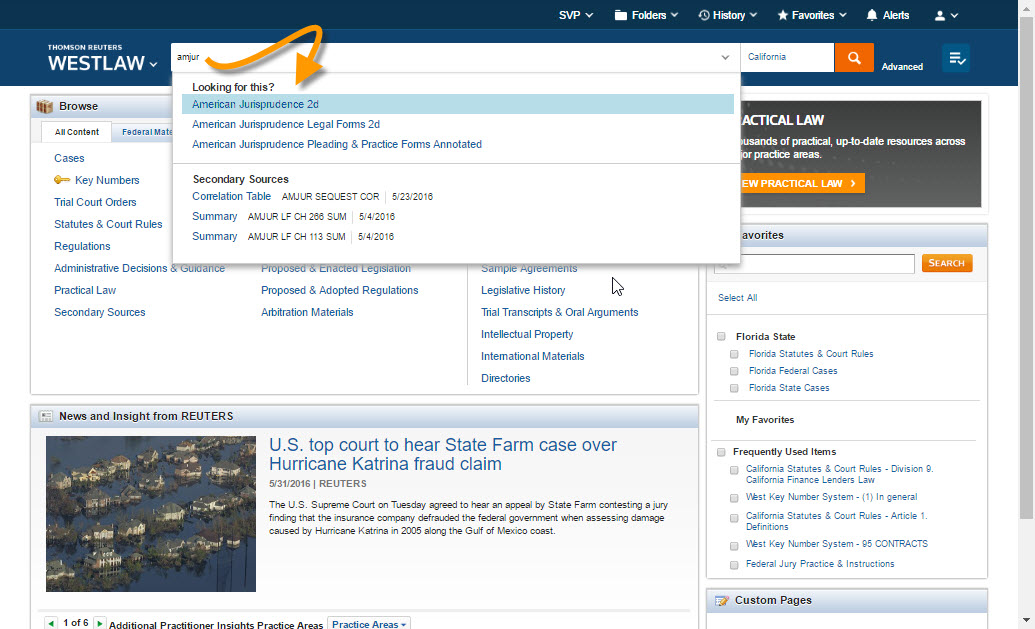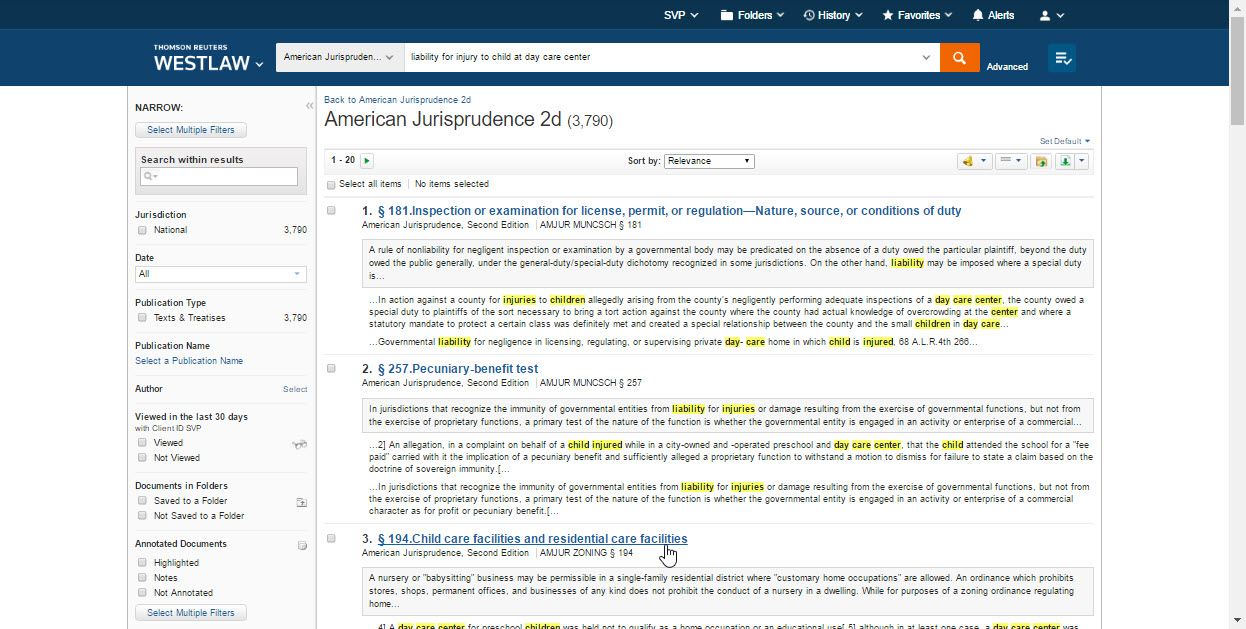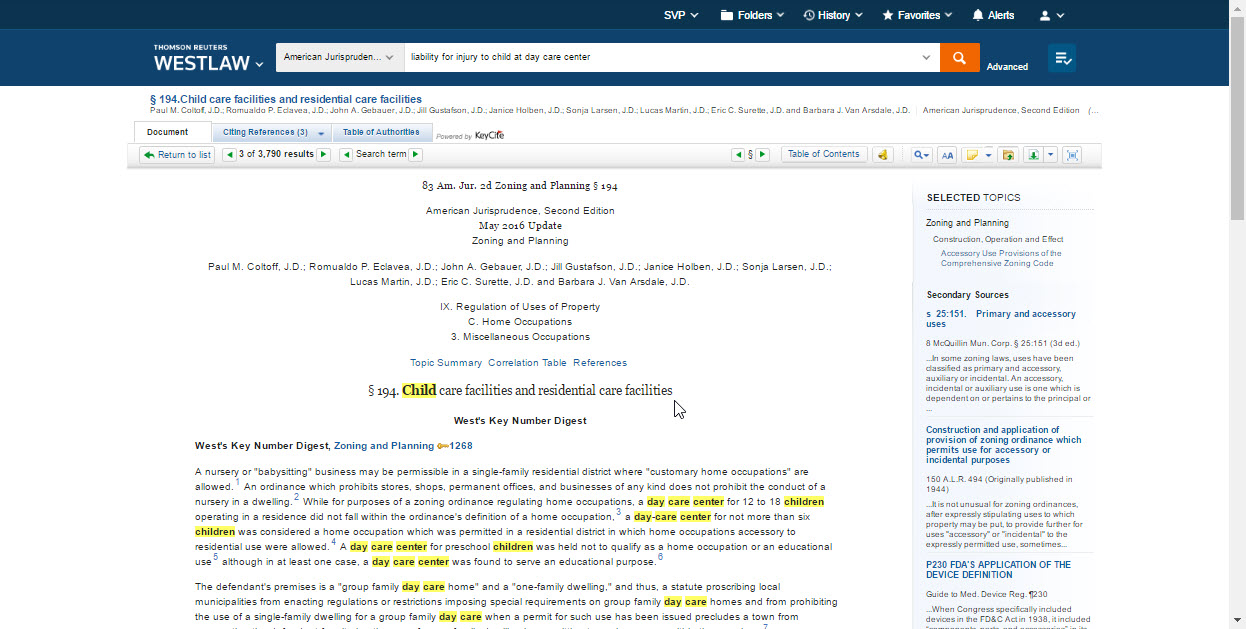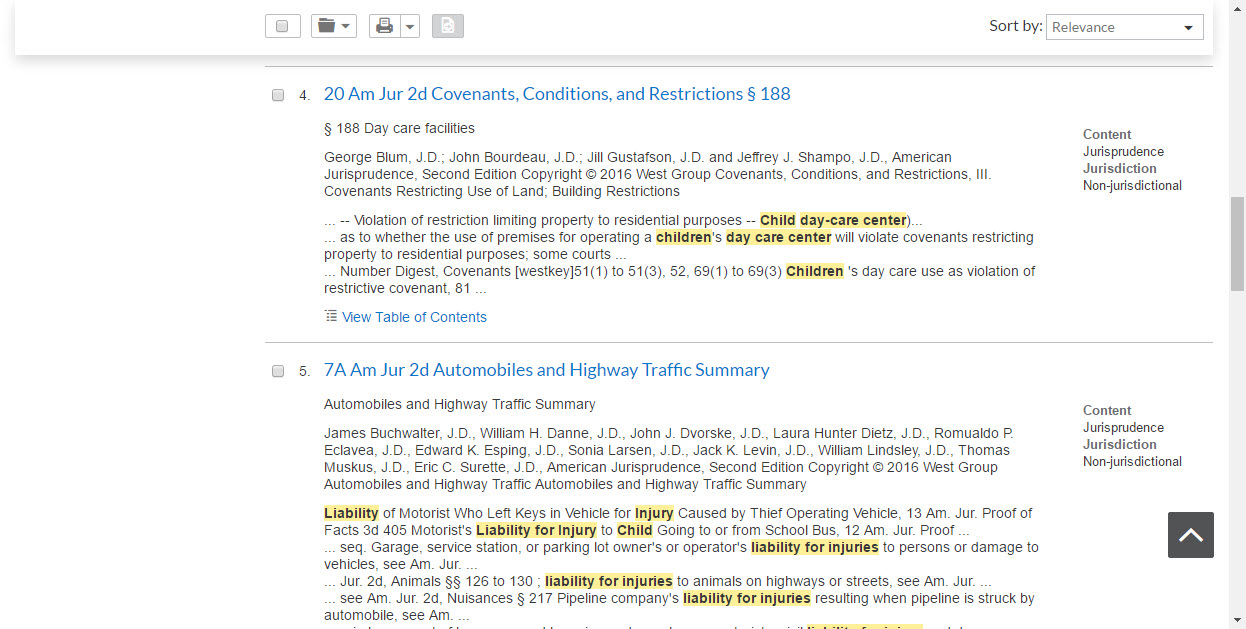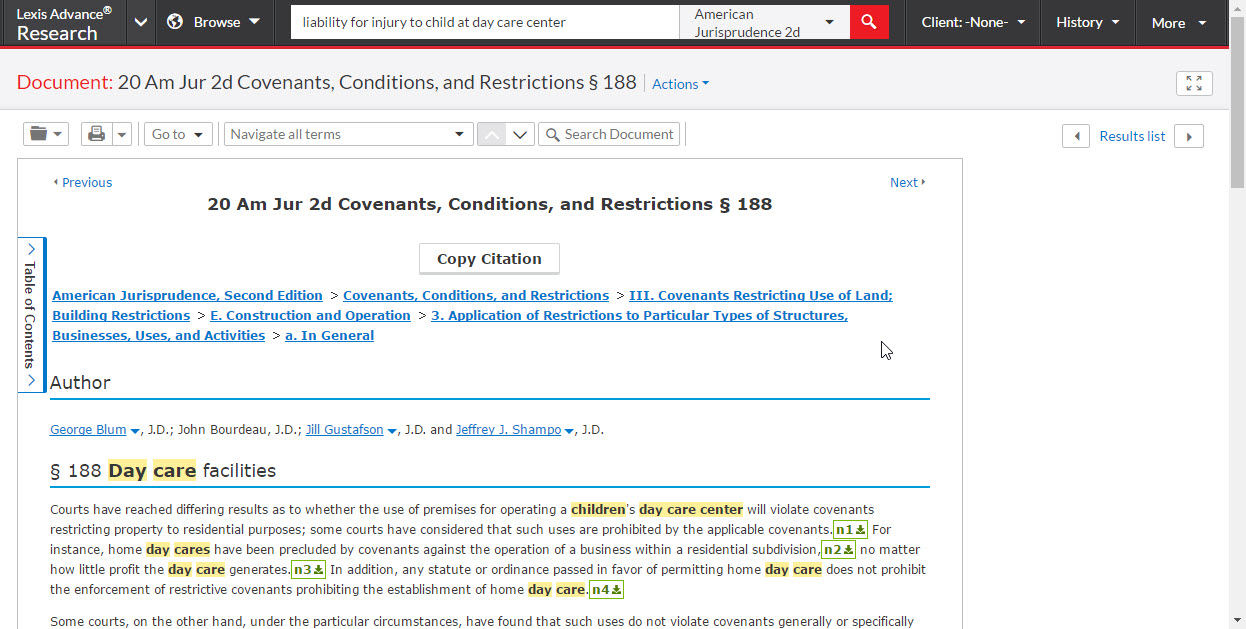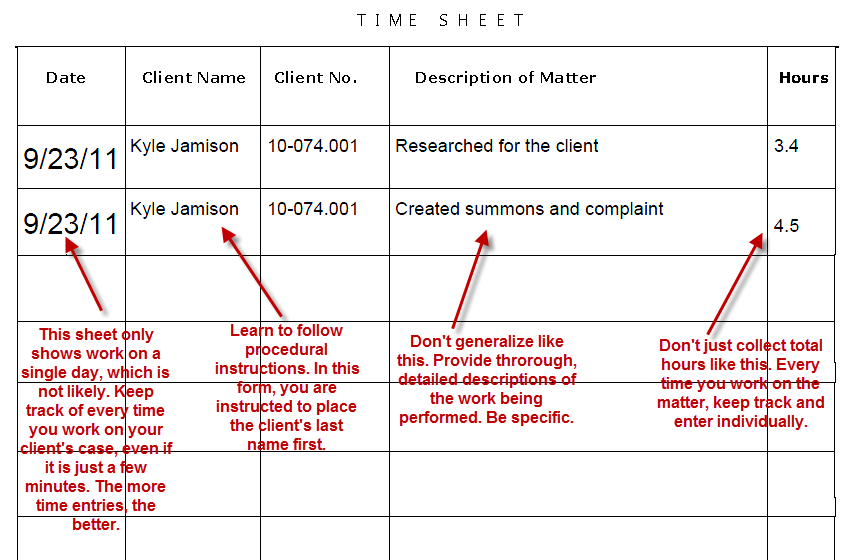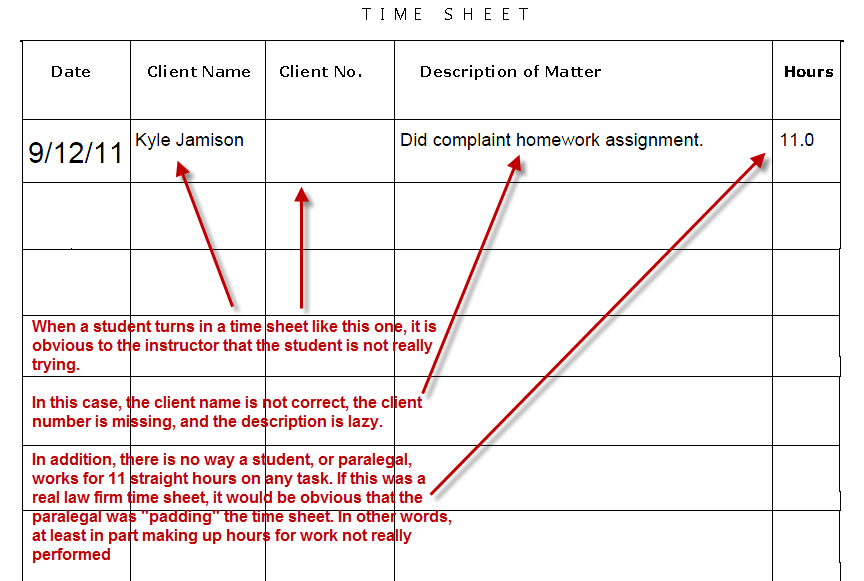Where You Have Been

The average student spends
in importance for exam preparation
2.8
American Jurisprudence, 2d (Am. Jur. 2d)
-
Segment ProgressBar

INTRODUCTION
American Jurisprudence, 2d (Am. Jur. 2d) is one of the two national legal encyclopedias. The structure of the two encyclopedias is basically identical. In other words, if you can use one, you can use them both. It is usually just called "Am. Jur."
American Jurisprudence 2d has the following key points:
-Am. Jur. 2d is a national legal encyclopedia
As an encyclopedia, Am. Jur. 2d discusses almost every area of law, then refers the researcher to other forms of authority (including law) through the footnotes.
-Always start in the index
Am. Jur. 2d has a multi-volume index titled the General Index.
-Am. Jur. 2d is published by Lawyer's Cooperative Publishing Company
This is important because Lawyer's Coop. utilizes a special research system called the Total Client Service Library. (see below.)
-Am. Jur. 2d is part of the Total Client Service Library
This is simply a system whereby Lawyer's Coop. sends the researcher to other materials that they publish which are relevant to the topic being researched. Very effective.
-Am. Jur. 2d is secondary authority
Because it is not law, Am. Jur. 2d is considered secondary authority.
USING AM. JUR. 2d
When using secondary authority, the researcher almost always begins in the broadest index. The index for Am. Jur. 2d consists of paper backs and are called the General Index.
When researching in legal encyclopedias, the researcher must obtain two things from the index: A topic and section number (for example: Veterinarians § 285). The topic leads to the appropriate volume. The section number will lead us to the appropriate place within the volume. (Notice the topic on the spine of the volume in the picture above.)
Once the appropriate topic and section number in the volume is located, Am. Jur. 2d provides a general discussion of the specific topic. The encyclopedia then provides raised numbers, referred to as superior numbers, such as: 12. These are footnote references. Am. Jur. 2d leads the researcher to primary authority through the footnotes.
The encyclopedias are fairly easy to use. They are very broad. They contain a little bit about virtually every area of law (as opposed to treatises, for example, which contain a whole lot about specific areas of law.) Before the researcher leaves Am. Jur. 2d, he or she should check the pocket-part. In the pocket-part, the researcher locates the same topic and section number that had been checked in the main volume.
There is also a Title Index at the back of each volume. The Title Indexes (sometimes called volume indexes) are excellent indexes, but they are dangerous. Sometimes the index in the back of the volume can be 5 or 6 times as thorough as the General Index. However, the references contained in the Title Index lead within that volume only and not to other volumes.
On the other hand, the General Index leads to many different volumes. Therefore, don't begin your research in the Title Index. However, once the researcher has checked the General Index, it is certainly a good idea to take a look in the back of the volume for the Title Index.
The research system utilized by Am. Jur. 2d is the Total Client Service Library.
QuickView: American Jurisprudence, 2d

Demonstration
CLICK HERE for an Introductory Tour of Am. Jur. 2d
Paralegal Perspective . . .
AM. JUR. 2d
Legal encyclopedias can be a good initial research source for paralegals. Even if you haven't been given a specific research assignment, an encyclopedia can give you foundational information about a specific area of law.
Be aware that while a paralegal wants to use encyclopedias as a research source, it is not usually a good idea to quote them. While it is not technically wrong to quote an encyclopedia, most attorneys would not since they carry such little weight with the court. There is an exception to this rule, however. If you are citing an encyclopedia to define a term or phrase, that would be acceptable.
Lecture Notes . . .
YOUR FIRST LAW BOOKS
American Jurisprudence, 2d
It's very important that you read all the information provided in this exercise, then answer the Assignment questions as you go.
But what happens if you are looking in the index for Am. Jur. 2d (pronounced: am jer second) and don't find anything for your research topic? Does this mean you are doing something wrong? Not necessarily. If you have cartwheeled your topic and checked all the places you can think of for your topic, you may have to accept an unpleasant fact: The book in which you are researching doesn't deal with your topic! That happens often. But what are you to do regarding your assignment?
The important thing at this stage is to get to know the materials, so if you don't find anything, just switch topics. You can go back to the Manual, or even better, just scan the Index of Am. Jur. 2d for something of interest to you. Then switch to that topic just for the purpose of answering the questions in this exercise. When you start the next exercise, in C.J.S., switch back to your original topic.
And remember, if you find relevant authority as you conduct these exercises, copy them and keep them. Those authorities may be needed later when you draft your final assignment.
/ archive item

ViewPoint
How to Use Legal Encyclopedias
The Good, The Bad, and The Ugly Time Sheets
You are required to keep track of your billable hours when working on legal research and writing assignments and to turn them in with your written assignments. Click on the examples of Time Sheets below to zoom in and compare. Yours should look like the Good example.
Exercise Answers
 Click the Answers tab to reveal suggested responses to the exercise in this section of the textbook.
Click the Answers tab to reveal suggested responses to the exercise in this section of the textbook.But don't look until you have attempted to complete the exercise first.

